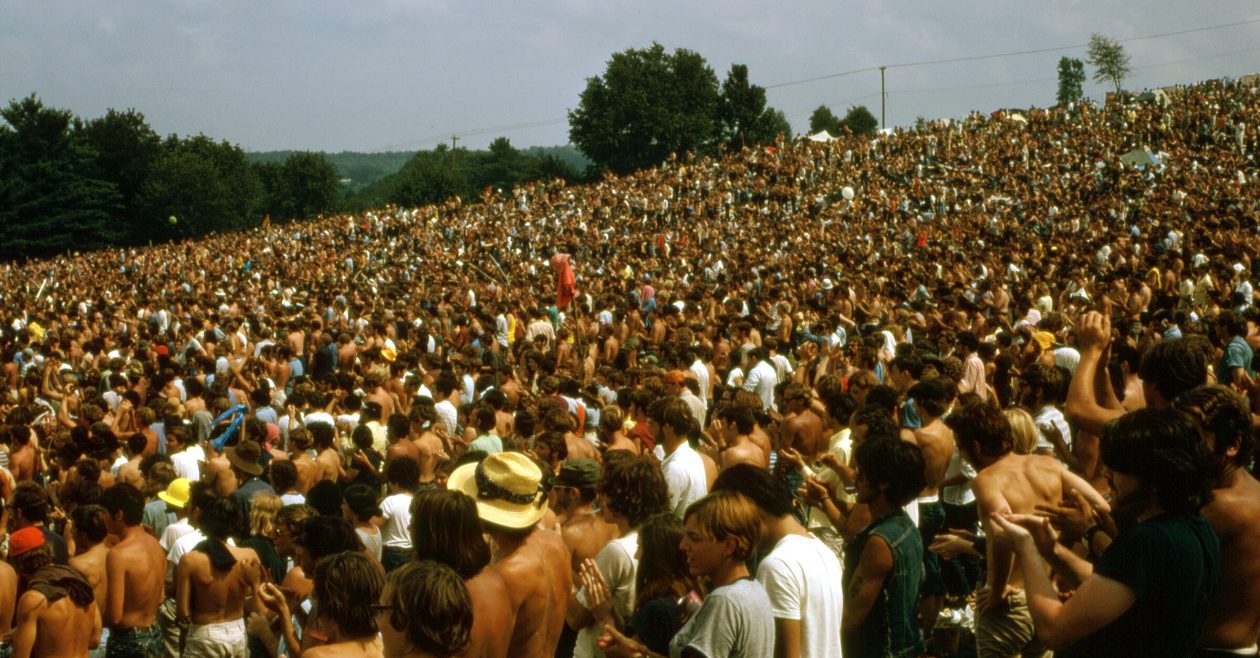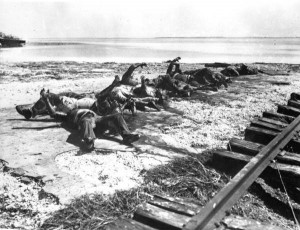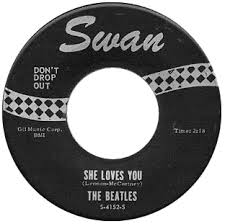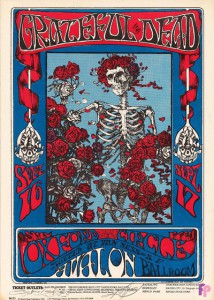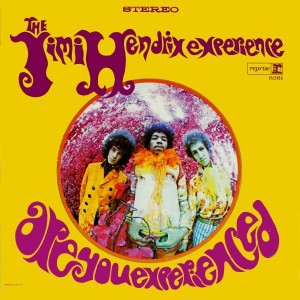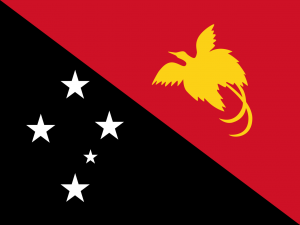September 16 Peace Love Art Activism
BLACK HISTORY
Palm Beach County, Florida hurricane
September 16, 1928: a Category 4 hurricane with winds of 140 miles per hour made landfall in Palm Beach County, Florida. The hurricane destroyed a levee that protected a number of small farming communities from the waters of Lake Okeechobee. Most of the residents of these low-lying communities were black migrant farm workers. When the levee was destroyed, water from Lake Okeechobee rushed into these communities, killing thousands. After the hurricane, black survivors were forced to recover the bodies of those killed. The officials in charge of the recovery effort ordered that food would be provided only to those who worked and some who refused to work were shot. The bodies of white storm victims were buried in coffins in local cemeteries, but local officials refused to provide coffins or proper burials for black victims. Instead, the bodies of many black victims were stacked in piles by the side of the roads doused in fuel oil, and burned. Authorities bulldozed the bodies of 674 black victims into a mass grave in West Palm Beach. The mass grave was not marked and the site was later sold for private industrial use; it later was used as a garbage dump, a slaughterhouse, and a sewage treatment plant. The city of West Palm Beach did not purchase the land until 2000. In 2008, on the 80th anniversary of the storm, a plaque and historical marker was erected at the mass grave site. [2003 Sun Sentinel article]
Black and Blue
In 1929: composed by Fats Waller with lyrics by Harry Brooks and Andy Razaf, Edith Wilson (1896 – 1981) sang “(What Did I Do to Be So) Black and Blue.”. It is a protest song that did not speak of how something should change so much as it spoke of what life was like for those who suffered inequities.
Out in the street, shufflin’ feet,
Couples passing two by two,
While here am I, left high and dry,
Black and ’cause I’m black I’m blue.
Browns and yell’ers all have fell’ers
Gentlemen prefer them light,
I’m just another spade who can’t make the grade,
Nothing but dark days in sight:
With a cold, empty bed, springs hard as lead,
Pains in my head, feel like old Ned.
What did I do, to be so black and blue?
No joys for me, no company,
Even the mouse ran from my house,
All my life through, I’ve been so black and blue.
I’m white inside, that don’t help my case
‘Cause I can’t hide, what is in my face, oh!
I’m so alone, Life’s just a thorn,
My heart is torn, Why was I born?
What did I do, to be so black and blue?
Just ’cause you’re black, boys think you lack
They laugh at you, and scorn you too,
What did I do, to be so black and blue?
When I draws near, they laugh and sneer,
I’m set aside, always denied,
All my life through, I’ve been so black and blue?
How sad I am, and each day the situation gets worse,
My mark of Ham seems to be a curse! Oh!
How will it end? Can’t get a boyfriend,
Yet my only sin lies in my skin.
What did I do, to be so black and blue?
Lyrics (with adjustments based on video version): http://www.perfessorbill.com/lyrics/lyblckbl.htm Sound: http://www.youtube.com/watch?v=5ELb0dQiV5w; Sound: mp3
(next BH, see July 13, 1930)
Crime and Punishment
September 16 – 17, 1986: in addition to his own account of the November 12, 1984 incident, Graham presented the testimony of William Berry and Officer Townes. Graham also sought to introduce expert testimony by Dr. Robert Meadows on the subject of proper police training.
Following the presentation of plaintiff’s case, all defendants moved for a directed verdict pursuant to Fed. R. Civ. P. 50. Upon consideration of the motions, the district court first concluded that a reasonable jury, viewing the evidence in the light most favorable to plaintiff, could not find that the infliction of force by the police officers was constitutionally excessive. The court also found that Graham’s allegation of improper or inadequate police training by the City of Charlotte was refuted by the testimony of his own expert witness. Finally, the court rejected the claim of handicap discrimination based on Sec. 504 of the Rehabilitation Act on the ground that the statute did not reach misconduct of the sort alleged by Graham. Accordingly, the district court granted all motions for a directed verdict as to all counts of the plaintiff’s complaint.
The ruling in favor of the Charlotte police will be confirmed on appeal. (C & P, see Oct 27; Graham, see May 15, 1989)
BLACK & SHOT
September 16, 2016: white police officer Betty Shelby shot and killed Terence Crutcher, a 40-year-old black man, in Tulsa, Oklahoma. Crutcher was unarmed during the encounter, in which he was standing near his vehicle in the middle of a street. [2017 CNN acquittal article] (B & S, see ; Crutcher, see May 17, 2017)
September 16 Peace Love Art Activism
Early “News Music”
What Did I Do…
In 1929: composed by Fats Waller with lyrics by Harry Brooks and Andy Razaf, Edith Wilson (1896 – 1981) sang “(What Did I Do to Be So) Black and Blue.”. It is a protest song that did not speak of how something should change so much as it spoke of what life was like for those who suffered inequities.
“How Can A Poor Man Stand Such Times and Live?”
In 1929 Blind Alfred Reed (1880 – 1956) wrote “How Can A Poor Man Stand Such Times and Live?” The song describes life during the Great Depression.
‘Which Side Are You On?’
In 1931, Florence Reece (1900-1986) “was a writer and social activist whose song ‘Which Side Are You On?’ became an anthem for the labor movement. Borrowing from the melody of the old hymn ”Lay the Lily Low,” Mrs. Reece wrote the union song…to describe the plight of mine workers who were organizing a strike in Harlan County, Ky. Mrs. Reece’s husband, Sam, who died in 1978, was one of those workers. Pete Seeger, the folk singer, recorded the song in 1941. It has since been used worldwide by groups espousing labor and social issues.” — New York Times Obituaries, August 6, 1986. (Labor, see March 3; Feminism, see Dec 10)
Brother Can You Spare a Dime
Also in 1931: “Brother Can You Spare a Dime” by lyricist E. Y. “Yip” Harburg and composer Jay Gorney., the song asked why the men who built the nation – built the railroads, built the skyscrapers – who fought in the war (World War I), who tilled the earth, who did what their nation asked of them should, now that the work is done and their labor no longer necessary, find themselves abandoned, in bread lines.
Harburg believed that “songs are an anodyne against tyranny and terror and that the artist has historically always been on the side of humanity.” As a committed socialist, he spent three years in Uruguay to avoid being involved in WWI, as he felt that capitalism was responsible for the destruction of the human spirit, and he refused to fight its wars. A longtime friend of Ira Gershwin, Harburg started writing lyrics after he lost his business in the Crash of 1929. (see Yip Harburg for more about him)
“Bourgeois Blues”
In 1932 Jimmie Rogers (1897 – 1933) was born in Meridian, Mississippi worked on the railroad as his father did but at the age of 27 contracted tuberculosis and had to quit. He loved entertaining and eventually found a job singing on WWNC radio, Asheville, North Carolina (April 18, 1927). Later he began recording his songs. The tuberculosis worsened and he died in 1933 while recording songs in New York. In 1932 he recorded “Hobo’s Meditation.”
In 1938, Lead Belly (born Huddie William Ledbetter) (1888 – 1949) sang about his visit to Washington, DC with his wife and their treatment while in the nation’s capitol in his song, “Bourgeois Blues”. (BH, see Nov 22)
“Do Re Mi.”
In 1939: during the Great Depression, Woody Guthrie (1912-1967) wrote many songs reflecting the plight of farmers and migrant workers caught between the Dust Bowl drought and farm foreclosure. One of the best known of these songs is his “Do Re Mi.”
Tom Joad
In 1940 Woody Guthrie wrote Tom Joad, a song whose character is based on John Steinbeck’s character in The Grapes of Wrath.
After hearing it, Steinbeck reportedly said, “ That f****** little b******! In 17 verses he got the entire story of a thing that took me two years to write.” * (see Feb 23)
September 16 Peace Love Art Activism
September 16 Music et al
“She Loves You”
September 16, 1963: the US release of “She Loves You.” The song wasn’t a hit at first. Capitol – EMI’s US counterpart – refused to release it, and Vee Jay – which had released Please Please Me and From Me To You to little effect – also declined. Desperate for a stateside hit, Brian Epstein licensed the song to Swan Records, based in Philadelphia, although it was picked up by very few of the crucial US radio stations. (see Oct 4)
Teenage Culture

September 16, 1964: Shindig! premiered on ABC. Produced as a replacement for Hootenanny which fizzled out with the British Invasion. Shindig! will become one of a few shows providing a venue for pop music. The opener featured Sam Cooke, the Everly Brothers, the Wellingtons, Jackie and Gayle, Donna Loren, Bobby Sherman and the Righteous Brothers.
In 1965: Time Magazine called young people the “generation of conformists” (see Jan 8)
Grateful Dead
September 16, 1966: Dead poster for a show at the Avalon Ballroom, San Francisco. Undoubtedly the most famous poster from the 60’s as well as the most recognized image ever used by the Grateful Dead. The central image is a drawing done by Edward Joseph Sullivan, a late 19th and early 20th century artist. Sullivan created this drawing to illustrate one of the quatrains of the Rubaiyat of Omar Khayyam. Mouse and Kelley added the color, as the original drawing was in black and white. A thorough examination of this poster shows the excellent lettering, fine use of the ribbon motif an ideal choice of coloring and perfect framing and balance in the design. [from Professor Poster] (see October 2, 1967)
Are You Experienced
September 16, 1967: ‘Are You Experienced?‘ entered the Billboard Hot 200 album chart, where it stayed for 106 weeks, including 77 weeks in the Top 40.
In 2003, Rolling Stone magazine ranked it No.15 on their 500 Greatest Albums of All Time and two years later it was selected for permanent preservation in the National Recording Registry at the Library of Congress in the United States. (see November 16 – 29, 1968)
Last live Jimi Hendrix
September 16, 1970: Hendrix joined Eric Burdon on stage at Ronnie Scotts in London for what would become the guitarist’s last ever public appearance. (see Sept 18)
Victor Jara
September 16, 1973: Allende supporter, Victor Jara, was tortured and executed. His last words, “A song has meaning when it beats in the veins of a man who will die singing. “ Jara thought American folksingers were spoiled and immature. Many have dedicated songs to Jara or referred to him in a song’s lyrics. (see Jara for more)
September 16 Peace Love Art Activism
US Labor History
UFW/AWOC
September 16 1965: César E. Chávez’s National Farm Workers Association voted to join Agricultural Workers Organizing Committee (AWOC) grape strike. [UFW article] (see October 1965)
UAW strike
September 16, 2019: the United Automobile Workers union went on strike at General Motors, sending nearly 50,000 members at factories across the Midwest and South to picket lines.
With the two sides far apart in the talks, U.A.W. regional leaders in Detroit voted unanimously to authorize the strike, the union’s first such walkout since 2007. It began at midnight, after the union’s current bargaining agreement expired on Saturday.
“Today, we stand strong and say with one voice, we are standing up for our members and for the fundamental rights of working-class people in this nation,” Terry Dittes, a union vice president, said after the meeting.
The U.A.W. was pushing G.M. to improve wages, reopen idled plants, add jobs at others and close or narrow the difference between pay rates for new hires and veteran workers. G.M. wants employees to pay a greater portion of their health care costs, and to increase work-force productivity and flexibility in factories. (see Oct 16)
September 16 Peace Love Art Activism
Vietnam
September 16, 1974: President Ford offered conditional amnesty to thousands of Vietnam era draft evaders and military deserters who agreed to work for up to two years in public service jobs.
“My sincere hope,” he said in a statement, “is that this is a constructive step toward calmer and cooler appreciation of our individual rights and responsibilities and our common purpose as a nation whose future is always more important than its past.”
In his proclamation, the President declared that “desertion in time of war is a major, serious offense,” and that draft evasion “is also a serious offense.” Such actions, he said, need not “be condoned.” “Yet,” he continued, “reconciliation calls for an act of mercy to bind the nation’s wounds and to heal the scars of divisiveness.”
Some questioned Ford’s conditional amnesty compared to his unconditional pardon for Nixon 8 days earlier. (NYT article) (Vietnam, see Dec 26; pardon, see January 21, 1977)
September 16 Peace Love Art Activism
INDEPENDENCE DAY
September 16, 1975: Papua New Guinea independent of Australia. [AG article] (see Nov 11)
September 16 Peace Love Art Activism
LGBTQ
Leonard Matlovich
September 16, 197: attorneys for Sgt. Leonard Matlovich of the Air Force argued that the military was unlawfully trying to impose on him the moral standards of the majority by requiring his discharge for admitting that he was a homosexual. (LGBTQ, see Sept 22; Matlovich, see Oct 22)
Episcopal Church
September 16, 1976, LGBTQ: the Episcopal Church, at its General Convention in Minneapolis, formally approved the ordination of women as priests and bishops. (see January 27, 1977)
September 16 Peace Love Art Activism
Iraq War II
September 16, 2007: employees of Blackwater Security Consulting (since renamed Academi), a private military company, shot at Iraqi civilians killing 17 and injuring 20 in Nisour Square, Baghdad. The killings outraged Iraqis and strained relations between Iraq and the United States. Blackwater guards claimed that the convoy was ambushed and that they fired at the attackers in defense of the convoy. The Iraqi government and Iraqi police investigator Faris Saadi Abdul alleged that the killings were unprovoked [Wikipedia entry] (Iraq, see Dec 30; Blackwater, see October 22, 2014)
September 16 Peace Love Art Activism
Feminism
Malala Yousafzai
September 16, 2013: Amnesty International announced that the recipients for its Ambassador of Conscience Award for 2013 were Malala Yousafzai and American singer, human rights and social justice activist Harry Belafonte. Salil Shetty, Secretary General of Amnesty International, stated: “Our two new Ambassadors of Conscience are different from each other in many ways, but they share a dedication to the fight for human rights everywhere and for all.” (see Nov 10)
September 16 Peace Love Art Activism
FREE SPEECH & Colin Kaepernick
Garfield High School’s (Seattle)
September 16, 2016: all of Garfield High School’s (Seattle) football players and coaches knelt during the national anthem.
Joined by a few players from the West Seattle Wildcats, Garfield High School’s football players and coaches kneeled during “The Star-Spangled Banner,” which head coach Joey Thomas said would continue for the rest of the season. Speaking with the Seattle Times, Thomas was candid about racial injustice and the team being compelled to protest the anthem, especially after players learned about the song’s racist third verse.
No refuge could save the hireling and slave
From the terror of flight or the gloom of the grave,
And the star-spangled banner in triumph doth wave
O’er the land of the free and the home of the brave.
Laguna Creek High School (Sacramento)
September 16, 2016: twelve high school football players from Laguna Creek High School in Sacramento took a knee during the national anthem
According to the Sacramento Bee, a number of parents reportedly told the players to “stand up.” The Elk Grove School District announced in a statement that it would not discipline the students, saying that although it supports standing for the national anthem, it “respects and supports our students’ individual experiences and their right to exercise their freedom of speech and expression protected by the First Amendment of the United States Constitution.” (FS & CK, see Sept 17)
September 16 Peace Love Art Activism
Immigration History
September 16, 2017: California lawmakers passed a “sanctuary state” bill to protect immigrants without legal residency in the U.S., part of a broader push by Democrats to counter expanded deportation orders under the Trump administration.
The legislation by Sen. Kevin De León (D-Los Angeles), the most far-reaching of its kind in the country, would limit state and local law enforcement communication with federal immigration authorities, and prevent officers from questioning and holding people on immigration violations. (see Sept 24)
September 16 Peace Love Art Activism
Cannabis
September 16 2017:in July, Republican Gov. Chris Sununu had signed a bill decriminalizing cannabis in New Hampshire.
The legislation went into effect on this date, meaning that cannabis was decriminalized in all of New England.
Under the new law, people caught possessing up to three-quarters of an ounce of marijuana would receive a $100 fine for their first or second offenses. The punishment would rise to a $300 fine for a third offense within a three-year period. If police find someone possessing small amounts of marijuana a fourth time in that window, they could be charged with a class B misdemeanor.
Until decriminalization, first-time cannabis possession was treated as a criminal misdemeanor punishable by up to one year behind bars and a $2,000 fine. (next C, see Nov 2; for expanded chronology, see CCC)
September 16 Peace Love Art Activism
Environmental Issues
September 16, 2004, Hurricane Ivan passed within 62 miles of theTaylor Energy oil platform , and caused submarine landslides that capsized the drill rig and moved it 560 feet from its original location.
The movement resulted in between 25 and 28 leaking wells being buried beneath the sea floor, approximately 475 feet below the surface.
As of April 2019, the well(s) continued to leak. (see Dec 26)
